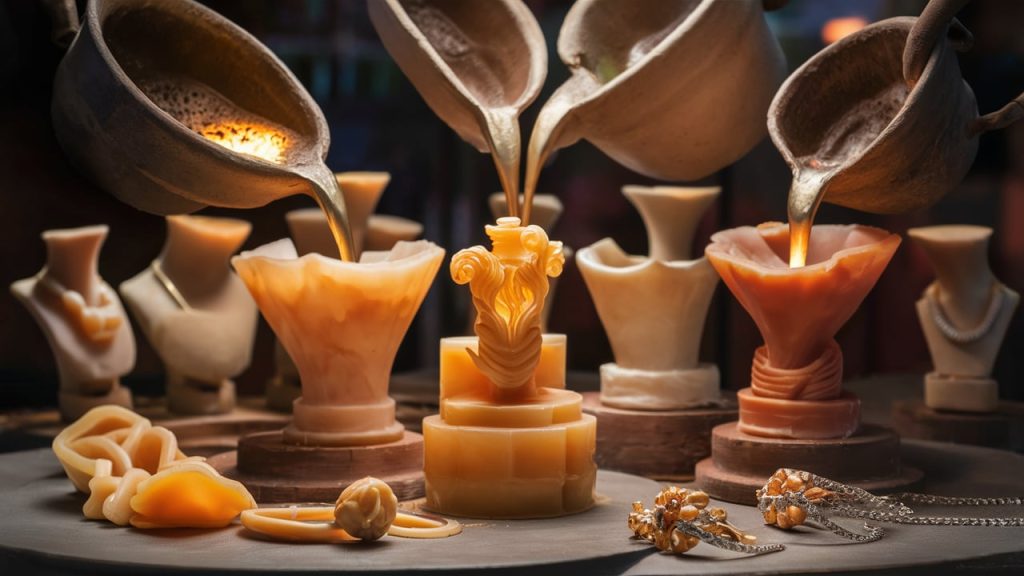In the realm of jewellery manufacturing, there is a time-honored and classy method known as the lost wax casting process. This method effortlessly combines the art of jewellery making with the techniques of metallurgy. Using this technique, lost wax casting company take great delight in working in our jewellery workshop to create one-of-a-kind creations.
The pieces of jewellery that they create are not simply manufactured; rather, they are painstakingly hand-carved in wax, and then they are converted into exquisite metal jewels by making use of high-quality techniques and materials.
The History And Evolution Of Lost Wax Casting In Jewelry
Lost wax casting is a mesmerising skill that has been woven into the fabric of jewelry-making for generations. Its origins may be traced back to ancient civilizations, and it has been passed down from generation to generation. It is believed that the oldest known instances of lost wax casting may be discovered in ancient Mesopotamia. During this time period, goldsmiths used this labor-intensive method to create elaborate beads and pendants.
Lost wax casting was an art form that developed throughout the course of history, with expert artisans in Greece, Rome, and Asia perfecting the method to produce magnificent works of art. This evolution occurred as civilizations grew and collapsed.
The Process Of Lost Wax Casting: A Step-By-Step Guide
- It is a process that takes accuracy, patience, and a profound grasp of the ancient traditions that have been handed down through the years. As the art of lost wax casting in jewellery continues to develop, it is a process that is a process that begins to emerge. The first step in the process involves the development of a wax model, which is meticulously sculpted to represent the precise intricacies and subtleties of the design that is currently being considered. For the purpose of forming a mould, this wax model is then encircled by a refractory material, which is a substance that is capable of withstanding the tremendous heat of the kiln.
- Lost wax casting is the process of bronze casting, a clay core and a wax covering are put inside of a mould. During the process of melting the wax in the mould and then draining it out, bronze is poured into the space that is left, resulting in the creation of a hollow bronze figure once the core is removed.
- The next step, which comes after the wax model has been finalised, is to form a mould around it. In lieu of the wax model, this mould will function as a negative space into which molten metal will be poured. This mould will act as the replacement part. In order to survive the heat of the molten metal, the mould is constructed out of an investment material, which is a substance that is resistant to high temperatures.
- For the purpose of ensuring that the metal fills every precise detail of the wax carving, a vacuum table is used to eliminate any air bubbles or defects that may be present in the mould. This stage is essential in order to get a faultless finished product that is able to preserve the spirit of the design that was first created.
- Now that the mould has been made, the following step is to use the furnace to melt the metal of your choice. After the metal has been melted, it is carefully put into the mould, where it replaces the wax carving that was previously used. In the process of cooling and solidifying, the metal assumes the precise form and texture of the pattern that was first conceived.
Bottom Line
Whether you’re a jewelry enthusiast or a collector of unique and extraordinary pieces, the benefits of casting from lost wax casting company are undeniable. This ancient technique, though often overlooked, is the key to creating truly extraordinary ornaments that is both beautiful and timeless. With the knowledge and appreciation gained from this article, we encourage you to explore the world of lost wax casting and perhaps even try your hand at crafting your own uniquely beautiful pieces.



